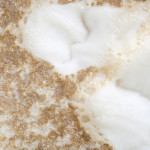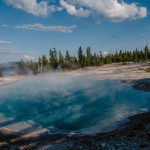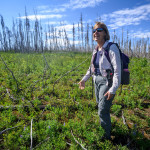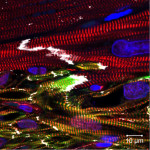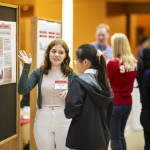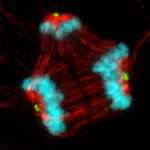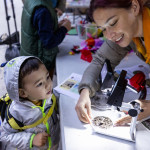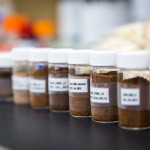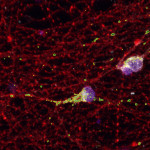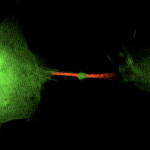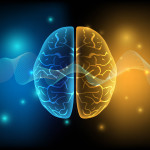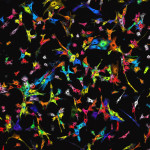Category Science & Technology
Research on beer fermentation yeast reveals unexpected evolutionary process
The insight could allow for multiple applications in diverse fields, such as medicine, biofuel production, and many products and industries that involve fungi.
Tomorrow’s Yellowstone
The landscapes of Yellowstone and Grand Teton national parks are loved by people around the world, but human-driven changes to climate will make for warmer, drier conditions with more fires. Monica Turner and her lab have been studying the changes in this ecosystem for decades and they want to make sure they communicate what they’re finding with the public.
Tomorrow’s Yellowstone: Arielle
As a PhD student in Turner’s lab, Arielle Link helps with the long-term forest resilience projects the lab has been conducting since the 1988 fires. But she's also working on her own PhD work investigate how lodgepole pine forests recover after severe wildfire by studying the fungi that grow in the understory and on the roots of the trees.
Tomorrow’s Yellowstone: Researchers
Getting to work, eat, live and sleep in Yellowstone and Grand Teton National Park everyday is a unique experience and one Arielle, Timon and Lucy don’t take for granted. But with such important work and busy field days, it’s also important for the researchers to care for themselves.
Tomorrow’s Yellowstone: Monica
Rooted in a deep love of the Greater Yellowstone Ecosystem, Monica Turner has spent the last 35 years training a generation of fire ecologists, influencing forest management and shaping our understanding of the future of western landscapes. While she feels the urgency to find answers and take action towards solutions that help limit human-driven climate change, she also feels optimistic.
Tomorrow’s Yellowstone: Lucy
Driven by her passion for the Greater Yellowstone Ecosystem and endless curiosity, recent UW–Madison grad and lab manager Lucy McGuire helps everyone stay organized and conduct their projects smoothly in the field. Whether they need an extra hand, a morale boost or a debrief on the discoveries of the day, Lucy is there.
Tomorrow’s Yellowstone: Timon
It can be difficult to connect the urgency and magnitude of climate change with every day life, but by starting with explaining the changes that are happening in these beloved national parks, PhD student Timon Keller hopes to inspire people to reflect on what a changing climate would mean for their own communities.
Sharing discoveries and imagining the future at the second annual Sustainability Symposium
From a keynote address on improving food security through a circular economy, to lightning talks on campus sustainability initiatives and poster sessions on research projects across UW–Madison, enthusiastic attendees learned, swapped ideas and inspired one another.
From ********* to EZacces$! Your browser extension could grab your password and sensitive info
The researchers found that a huge number of websites — about 15% of more than 7,000 they looked at — store sensitive information as plain text in their HTML source code.
Common chemotherapy drugs don’t work like doctors thought, with big implications for drug discovery
Findings reveal the likely reason why certain chemotherapies are effective for many patients. Importantly, they also help explain why attempts to find new chemo drugs based solely on stopping cellular division have been so disappointing.
Science on the Square: A festival of learning
Rainfall failed to stop people of all ages from exploring science hands-on at the sixth annual Science on the Square event on Oct. 19.
Wisconsin designated as Regional Tech Hub for biohealth – with UW–Madison helping lead the way
The Tech Hub designation opens the doors for millions in federal funding, as well as the opportunity to bring significant new private investment to the state’s biohealth industry. It is expected to generate a substantial number of new jobs, further boosting the state’s biohealth sector and enhancing employment opportunities for local communities.
UW–Madison project combines art, policy and science to create plant-based plastics and benefit marginalized communities
A team led by University of Wisconsin–Madison scholars has a plan to turn paper mill waste into plant-based plastics, slashing greenhouse gas emissions and other pollution and creating economic opportunities in ways that benefit marginalized communities.
Remnant of cell division could be responsible for spreading cancer
The midbody’s involvement in cell signaling and stimulating cell proliferation has been investigated before, but UW researchers wanted to look inside the midbody remnants to learn more.
UW–Madison to launch novel research on suicide prevention and well-being
With up to $14 million in federal funding, the Center for Healthy Minds and the Wisconsin Institute for Sleep and Consciousness will investigate how complementary neuroscience and meditation-based interventions could target and repair the areas of the brain that control emotional regulation and cognitive flexibility.
Breaking through the noise of cellular signaling
Many cancers are the result of corrupted signaling pathways, and a more nuanced understanding of those pathway disruptions may be a key step in developing targeted treatments.

